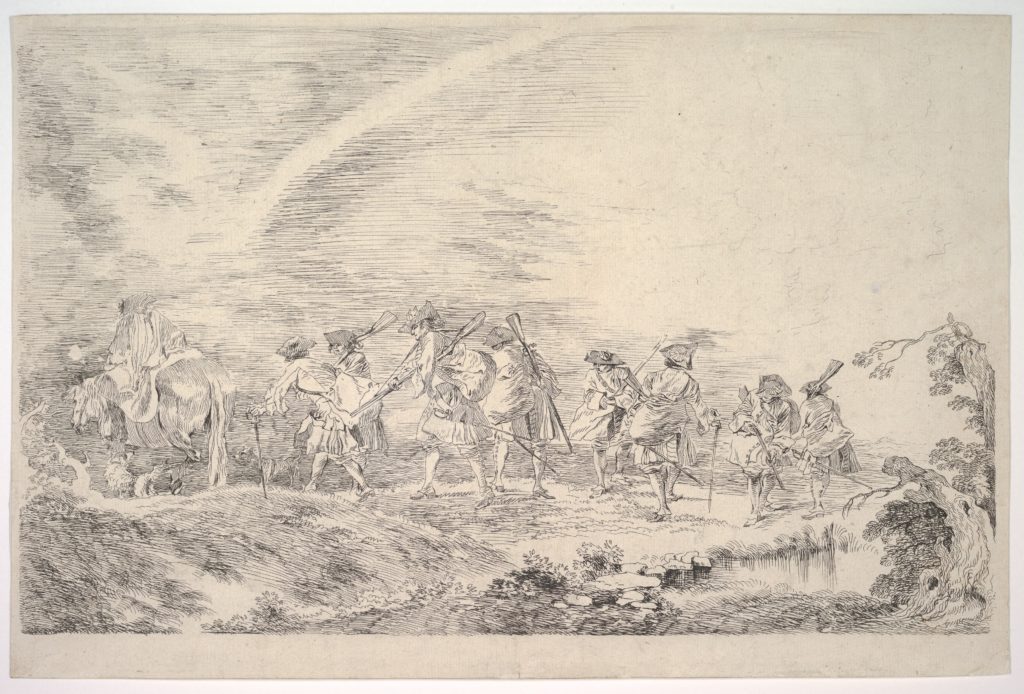Opinion
Jean-Antoine Watteau’s Soldiers: Caught Between the Past and Future of War
THE DAILY PIC: In Watteau's military paintings at the Frick, chivalry meets the pro soldier.

THE DAILY PIC: In Watteau's military paintings at the Frick, chivalry meets the pro soldier.

Blake Gopnik

THE DAILY PIC (#1627): Yesterday, I finally had a chance to take in the little show called “Watteau’s Soldiers: Scenes of Military Life in Eighteenth-Century France,” at the Frick Collection in New York. Today’s Pic is a charming etching, now known as Recruits Going to Join the Regiment, that was brought in from the Metropolitan Museum a dozen blocks up the street. It’s typical of the kind of martial subjects Jean-Antoine Watteau was addressing in these early pictures, all made in the years around 1712.
I’m no expert on military history, but it seems to me that Watteau comes at an important hinge-moment in European warfare, and sets out to illustrate it. There wasn’t much room left for the chivalric model that had soldiers, aka “knights in shining armor,” as figures of aristocratic romance and graciousness. But the fully professional model of soldiering, of the Napoleonic and later campaigns, hadn’t fully arrived either.
As a result, a lot of Watteau’s military imagery seems to feature the same aristocratic ease as his later fêtes champêtres, with their nobles at play. In this etching, for instance, some of Watteau’s soldiers might almost be dancing together. Other moments in Watteau’s depictions of soldiering, on the other hand, can evoke the images of tradesmen, in their customary uniforms with their usual tools, that became common during the Enlightenment.
For a brief moment, and with Watteau’s help, had warfare come to be conceived as an elegant dance of military artisans? The professionalized killing fields of Austerlitz and Borodino, not to mention the carnage at Gettysburg, would have put paid to that image.
For a full survey of past Daily Pics visit blakegopnik.com/archive.